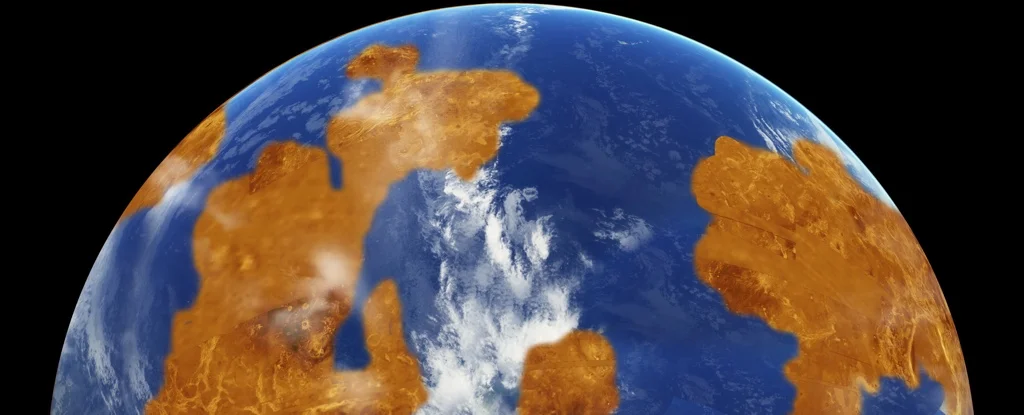Our neighbor in the solar system, Venus, is extremely similar to Earth in mass and gravity, but incredibly distant from it in terms of conditions. Scientists are trying to understand what happened to this planet and why it lost almost all its water. The authors of the new paper suggested that the culprit was a known chemical reaction for Venus, which they did not attempt to calculate.
Venus and Earth formed under similar conditions. Therefore, the isotopic composition and amount of water on Venus should be the same as on our planet. In other words, after water forms on it, it will be enough for a global ocean three kilometers deep. It should be noted that it is unlikely that it is actually there, since the weather is always hot on this planet. Today, judging by these observations, it is unlikely that all the water on Venus would be enough to create a three-centimeter “ocean”. This water is also abnormally rich in deuterium, an isotope of hydrogen that has a neutron in its nucleus. What happened?
Venus lost most of its water in the first two billion years. Some of the water vapor that was saturated in the planet’s atmosphere due to heat settled in the upper layers. There the molecules broke apart and light hydrogen atoms escaped into space. In this way, the proportion of heavy hydrogen atoms became abnormally high. Such a scenario is called the “explosive greenhouse effect”.
The process stops when the hydrogen concentration in the upper layers drops below 10 percent. Then the temperature there drops and the hydrogen molecules no longer have enough energy for space flight. This completes the “thermal” period of hydrogen loss. The problem is that this rupture occurs when there is still enough water left on the planet; Enough for a global ocean of about 100 meters, or in the extreme case enough for a 10 meter ocean. Here, scientists are trying to understand how Venus grew from tens of meters to today’s three centimeters.
Sufficient energy for escape can also be obtained from hydrogen as a result of chemical processes. In 2023, a group of researchers from the University of Colorado in Boulder (USA) examined 47 chemical mechanisms that caused the emergence of such “hot” hydrogen on Mars. They took into account the height of the reactions above the planet’s surface and how much energy the molecules could take up. The most effective mechanism turned out to be dissociative recombination of the positively charged ion (HCO+).
When the formyl cation encounters an electron, it dissociates into carbon monoxide (CO) and hydrogen (H). According to scientists, this process produces more “hot” hydrogen than the rest of the processes previously studied.
In a new study published in the journal NatureA team of scientists evaluated how HCO+ decay might have affected the Venusian atmosphere. This turned out to be significant. As HCO+ decays, the number of hydrogen atoms escaping nearly doubles. And this loss rate is enough to explain Venus’ current conditions. The planet has enough time to “dry out” and reach its modern equilibrium in the period after the initial “greenhouse” hydrogen loss.
The reason why no one has attempted to predict the effect of dissociative recombination of the formyl cation on water loss from the atmosphere is simple: not enough measurements have been made. The Pioneer Venus spectrometer measured ratios of elements, none of which allowed an estimate of HCO+.
His other device could detect HCO+ ions in theory, but failed to do so in practice. The Venus Express instrument also lacked sensitivity for such measurements. Additionally, he did not collect samples from the altitude where the HCO+ reaction occurred.
New observations and models are needed to test hypotheses. Planned missions to Venus – DAVINCI, VERITAS, EnVision and others – will be able to collect measurements both in the “mixed” lower layers of the atmosphere and above the clouds. Unfortunately, their instruments won’t be able to track “escaping” hydrogen and deuterium either. According to the authors of the study, this requires high-precision spectral observations.
By learning how fast Venus is losing hydrogen today, scientists will be able to predict when the period of water loss that creates a greenhouse effect on this planet ends. We now think that the planet lost water throughout its life, because otherwise it would not have had time to “dry out” in this way. If the process had been faster, it could have started later. So oceans could have existed on the planet for a while. However, as stated, this is unlikely.













